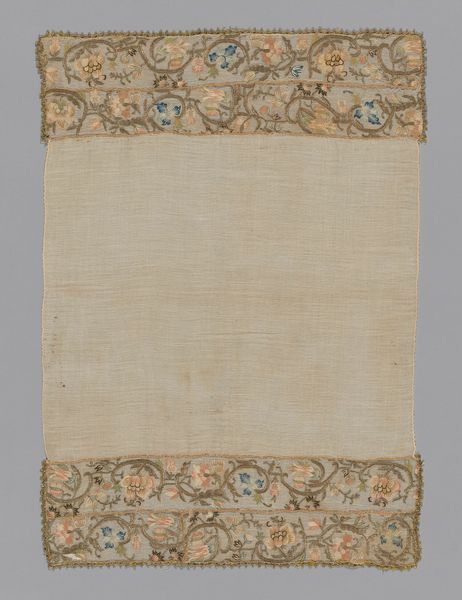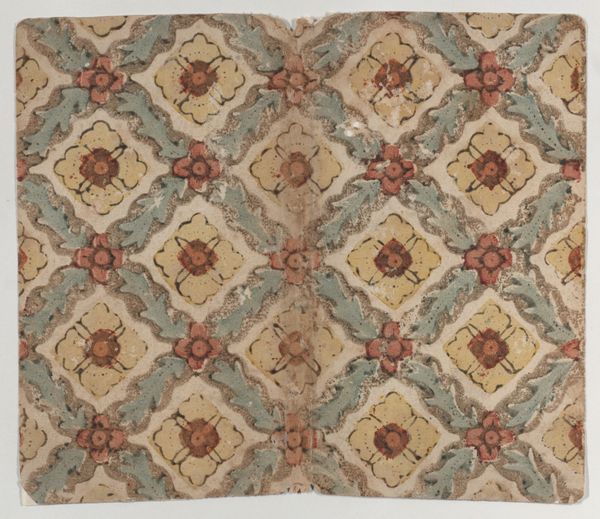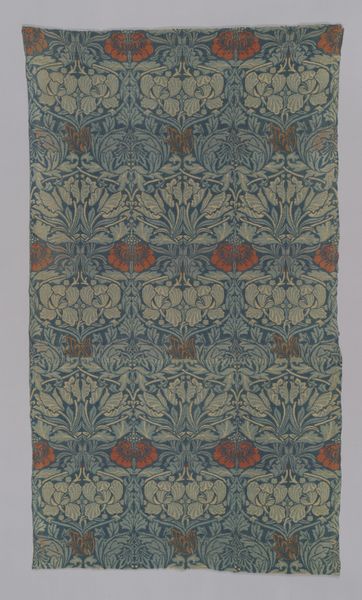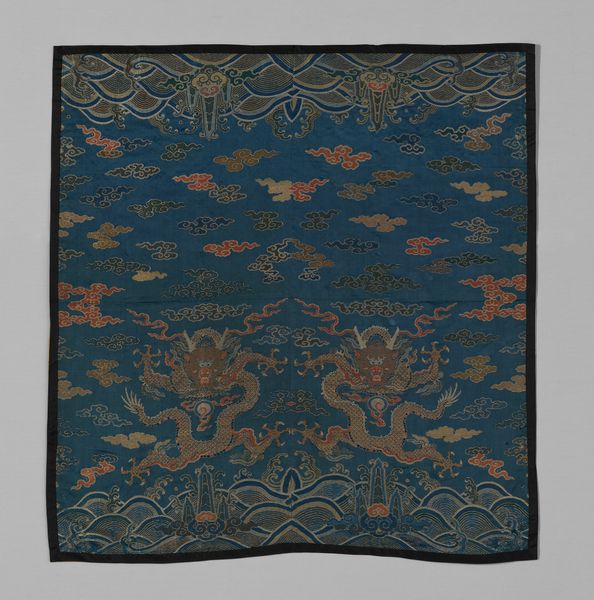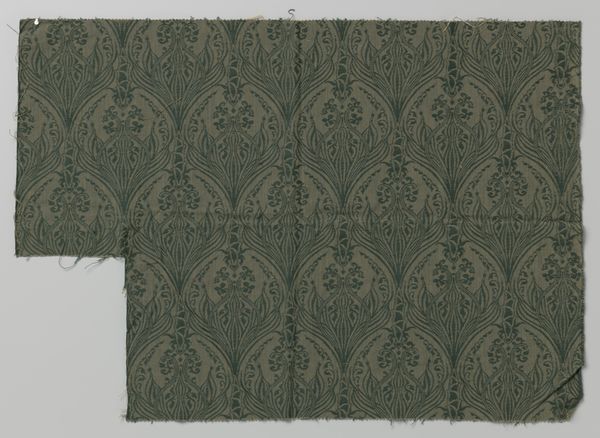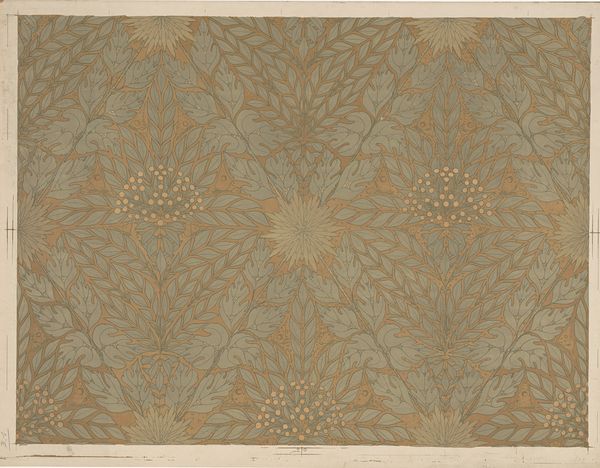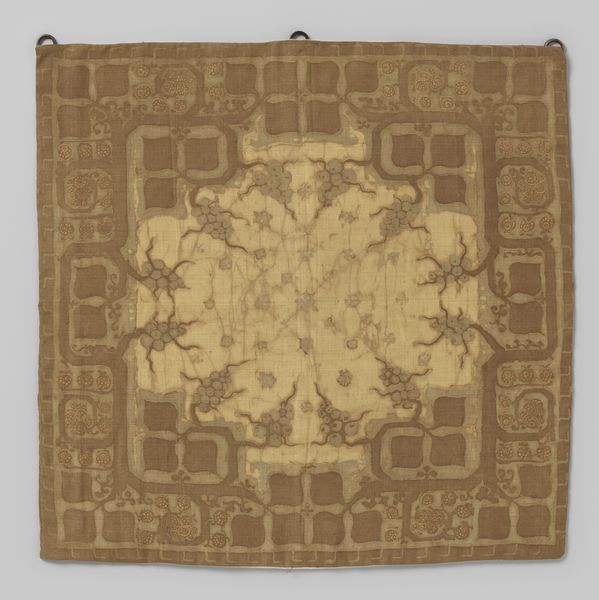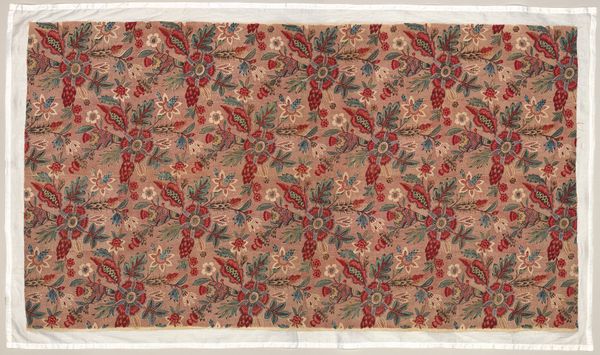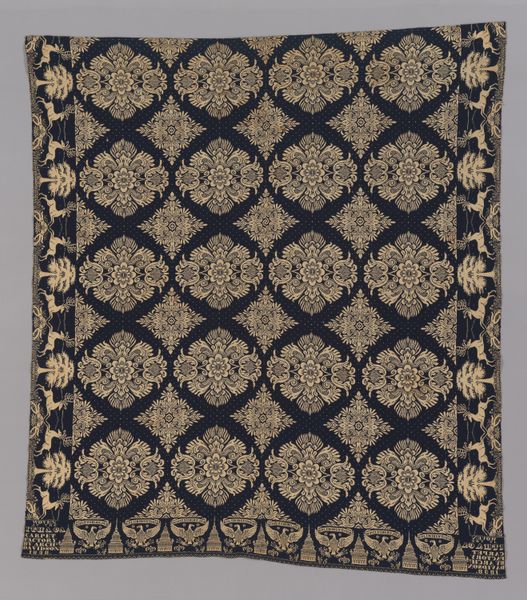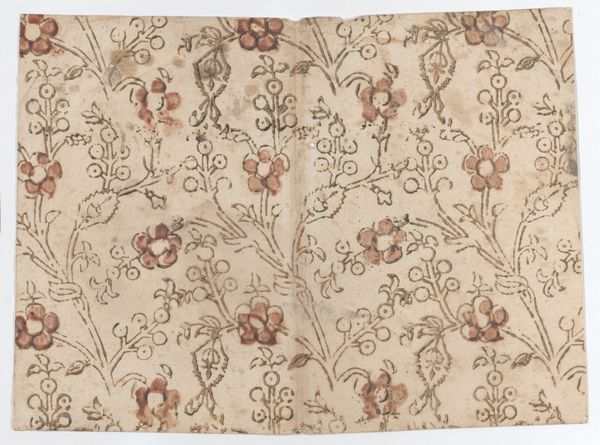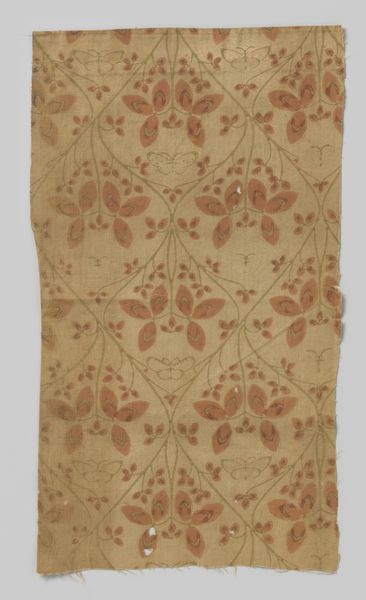
weaving, textile
#
asian-art
#
weaving
#
textile
Dimensions: 128 × 142.8 cm (50 3/8 × 56 1/4 in.)
Copyright: Public Domain
Curator: The textile before us is "Uncut Yardage (Dress Fabric)," a piece that potentially dates from between 1644 and 1911 during the Manchu dynasty in China. The museum categorizes it as weaving. What strikes you first? Editor: There's a restrained elegance in the color palette. It's mostly cream and tan, and very subtly patterned, yet the dragon motif still conveys power. Curator: The dragon motif indeed is rich in meaning. Historically, the dragon served as a symbol deeply entwined with Imperial power in Chinese culture. Wearing fabrics adorned with dragons became a visible declaration of social standing, reflecting hierarchical values. Editor: Right, this wasn't just about keeping warm. So how would its material composition relate to these cultural symbols? The technique of weaving – how long did this yardage take to produce, and who wove it? How did the process contribute to that reading of power? Curator: Those are essential questions. Textile production involved numerous laborers, from silk cultivation to the complex weaving itself. Access to such elaborate textiles marked social and economic disparities. It would mean something very different worn by royalty versus a merchant. Editor: Given the labor and materials, this textile becomes more than just surface ornamentation. We should look closely at that labor embedded in the material as a marker of class and power structures, as well as its function and intended consumer, as a tangible aspect of this cultural value system. Curator: Considering "orientalism", one might view this work within a complex frame. How do we interpret this today as a possible reflection of that historical moment or perhaps of a Western gaze on Chinese artistry? Editor: The questions surrounding its display, interpretation, and commodification of the work for Western audiences also warrant analysis in today’s market. Curator: Indeed. Analyzing this work allows us to examine the convergences between cultural representation, craft traditions, social values, and labor history. Editor: And appreciating that helps deepen our interaction and understanding. Curator: Precisely. There's always so much to uncover!
Comments
No comments
Be the first to comment and join the conversation on the ultimate creative platform.

